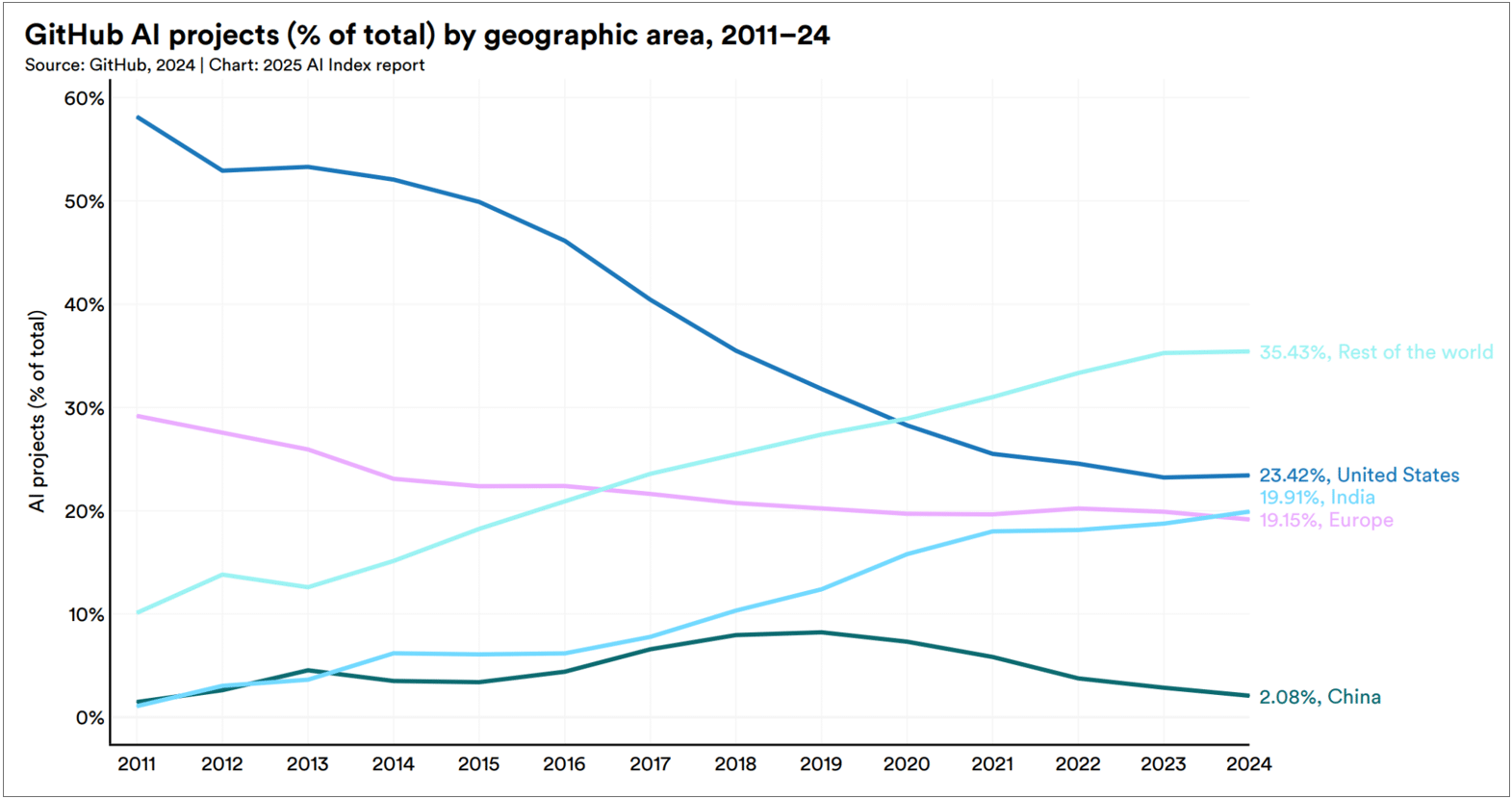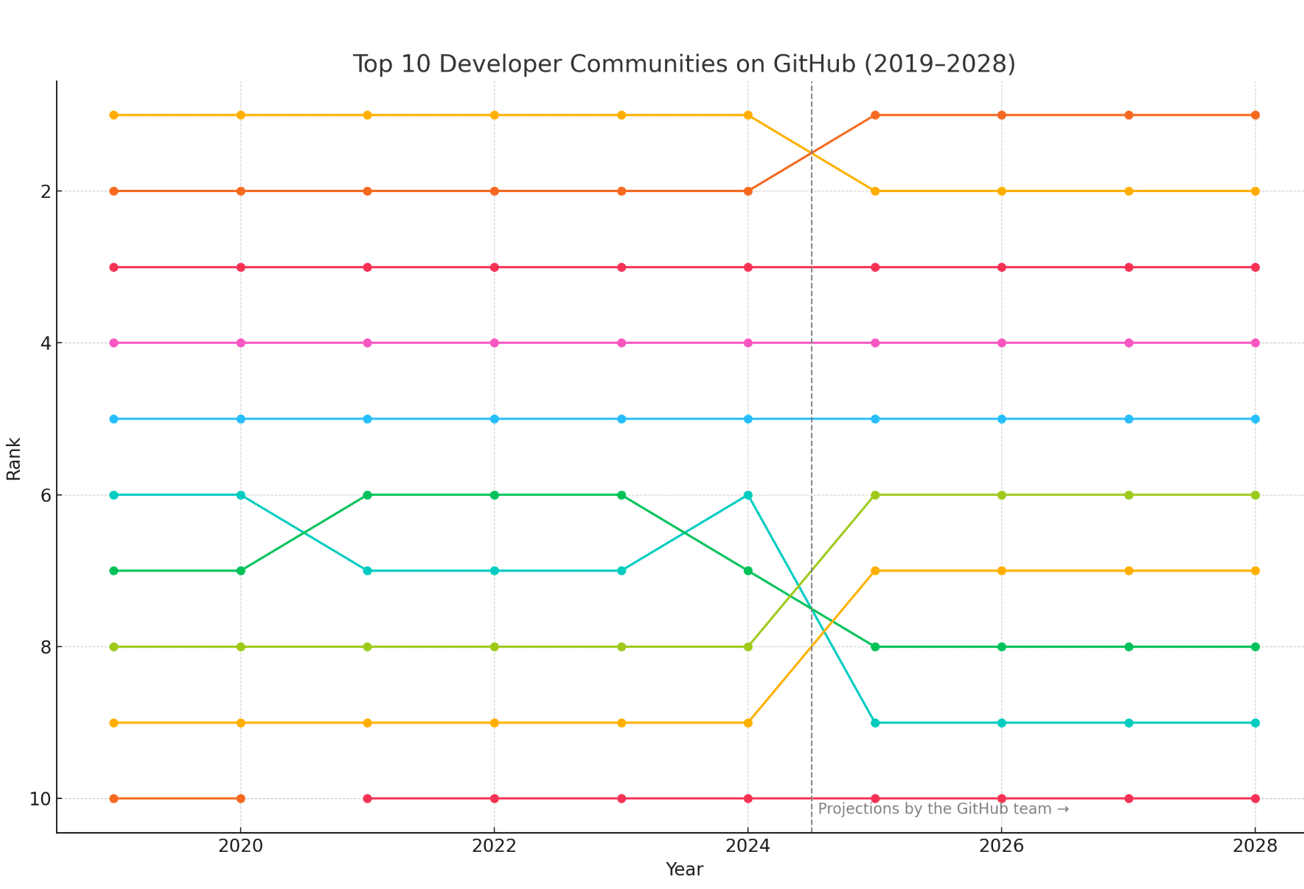It’s no secret that the geopolitical and economic relationship between the U.S. and China has grown increasingly complex, triggering a rethinking of global supply chains, from manufacturing to services. While the Trump administration’s trade and tariff policies will likely continue to evolve, one dynamic feels more certain: India’s emergence as a key technology partner to the West is accelerating—and it’s being turbocharged by the AI revolution.
At Battery, we’ve been closely tracking this shift. A recent, weeklong trip across Bangalore, Chennai, and Mumbai gave us a front-row seat to the energy and ambition pulsing through India’s tech corridors. What we saw reaffirmed a powerful insight: India’s decades-long experience as the “back office” for global enterprises is morphing into a critical asset for building the next generation of AI-native SaaS companies.
Historically, India has been known as the world’s back office. The country in many ways built the IT services and BPO/KPO empires that power global businesses, largely through Indian companies like TCS, Infosys, and Wipro that serviced Western companies. And many of those large corporations—like Accenture, Deloitte, KPMG, Gartner, and Nielsen—now have their largest global workforce based in India. Over time, this has created a massive base of highly skilled knowledge workers based in India who are deeply familiar with U.S. workflows, software systems, and business culture.
About a decade ago, Indian tech took another turn, as homegrown Indian entrepreneurs—some of them supported by organizations like NASSCOM and SaaSBoomi–set out to transform the country from a services hub into a product powerhouse. That vision gave rise to India-based software companies like Zoho, Freshdesk, Icertis, and HighRadius, which served a global market. Since then, over $20 billion in venture capital has flowed into Indian SaaS startups, giving birth to more than 20 unicorns, including Postman*, Druva, and Chargebee. The “Product Nation” movement continues to gain momentum. But now, a new wave is cresting: AI.
In the AI era, software isn’t just a tool—it’s the worker. AI-powered SaaS is now automating, augmenting, and in many cases replacing traditional SaaS digital workflows. For example, Cursor is building an AI code editor that understands your codebase and generates code based on simple English prompts, which frees up time for developers or negates the need to rely on junior software engineers. Similarly, Writer’s AI agents can generate copy and images that are in-line with your brand guidelines. To do that well, deep domain expertise is no longer optional—it’s essential. That’s where we feel India has a structural edge.
India’s triple advantage in AI SaaS
We see three core advantages positioning India to lead the next wave of AI software companies:
1. Fastest-growing developer talent pool: India is home to the fastest-growing developer pool globally, with 15 million software developers today. This number is projected to surpass 20 million by 2027. Already, one in four AI projects on GitHub originate from India.
2. Deep professional services expertise: With decades of experience across IT services, customer support, healthcare operations, compliance, and financial back-office workflows, teams in India have the right kind of domain expertise needed to build AI agents that can effectively automate and augment human work.
3. Capital efficiency: Indian startups benefit from a 3–5x cost advantage across key functions like software R&D, inside sales, technical support, and customer success. We believe this structural edge enables capital-efficient scaling—especially in product-led, go-to-market models where lean, high-velocity teams are a competitive advantage.
From Services to “Service-as-a-Software”
Let’s take Revenue Cycle Management (RCM) as an example—a critical function in healthcare that includes processes like insurance eligibility verification, medical coding, and claims submission and follow-up. Many U.S. health systems have long outsourced this labor-intensive work to Indian services firms due to chronic shortages of medical coders and high turnover in billing roles. This created an opening for American companies like Omega Healthcare, R1 RCM, and GeBBS to build billion-dollar revenue businesses, collectively employing tens of thousands of people in India to manually process healthcare claims.
But now, the traditional RCM services model faces fundamental disruption with the rise of foundation models. For example, a recent study by researchers at Mt. Sinai demonstrated that the GPT-4 model achieved a peak accuracy of around 50% in coding various medical classifications (ICD and CPT codes). While this represents a significant starting point, with substantial room for improvement through fine-tuning on millions of medical claims records, even achieving 90% accuracy may not suffice in this critical domain. The reality is that even a seemingly small error rate can lead to substantial financial losses for healthcare providers. Therefore, the most promising path forward lies in an AI + human-in-the-loop architecture—strategically marrying the automation capabilities of AI with essential expert human oversight to enhance billing accuracy and reduce administrative costs. This presents a unique opportunity for Indian founders to build the next generation of AI-powered RCM services companies that effectively blend the strengths of LLMs with critical human expertise to maximize efficiency and minimize costly errors.
A similar disruption is unfolding in pharma and life-sciences compliance, a sector traditionally reliant on manual processes for regulatory documentation, audit preparation, and supply-chain oversight. Tasks such as regulatory filing, serialization reporting, and compliance tracking have often been outsourced to global service providers like IQVIA (formerly IMS Health), which offers comprehensive regulatory affairs services to pharmaceutical companies worldwide.
However, the advent of Large Language Models (LLMs) is transforming this landscape. LLMs excel at document ingestion, analysis, and generation, enabling the automation of complex compliance tasks. When combined with technologies like computer vision, these models can handle intricate processes such as interpreting regulatory guidelines and preparing submission documents. Nevertheless, due to the high stakes involved in regulatory compliance, we feel a human-in-the-loop approach remains essential to ensure accuracy and address nuanced scenarios. Innovative startups like AltiusHub are leading this transformation by offering AI-powered solutions that enhance supply-chain traceability and ensure compliance with global regulations.
The next-generation Indian SaaS playbook is emerging, focused on replacing legacy services with intelligent, AI-driven software solutions that combine automation with human expertise to meet the rigorous demands of pharma and life sciences compliance.
Hopping the pond—with Battery
At Battery, we’ve long believed in the “hop the pond” model: partnering with exceptional European and Israeli founders to scale their companies by tapping the vast, U.S. enterprise-IT market. Now, we’re seeing the same momentum from India. We already backed Postman*, which has become the global standard for API development, and more recently, Atomicwork*, an agentic IT service-management platform.
If you’re an Indian founder building an AI SaaS company with global ambition, we want to hear from you. Let’s build the next generation of intelligent enterprise software—from India to the world!
The information contained in this market commentary is based solely on the opinions of Dharmesh Thakker and Sudhee Chilappagari, and nothing should be construed as investment advice. This material is provided for informational purposes, and it is not, and may not be relied on in any manner as legal, tax or investment advice or as an offer to sell or a solicitation of an offer to buy an interest in any fund or investment vehicle managed by Battery Ventures or any other Battery entity. The views expressed here are solely those of the authors.
The information above may contain projections or other forward-looking statements regarding future events or expectations. Predictions, opinions and other information discussed in this publication are subject to change continually and without notice of any kind and may no longer be true after the date indicated. Battery Ventures assumes no duty to and does not undertake to update forward-looking statements.
* Denotes a Battery portfolio investment. For a full list of all Battery investments, click here.

A monthly newsletter to share new ideas, insights and introductions to help entrepreneurs grow their businesses.









